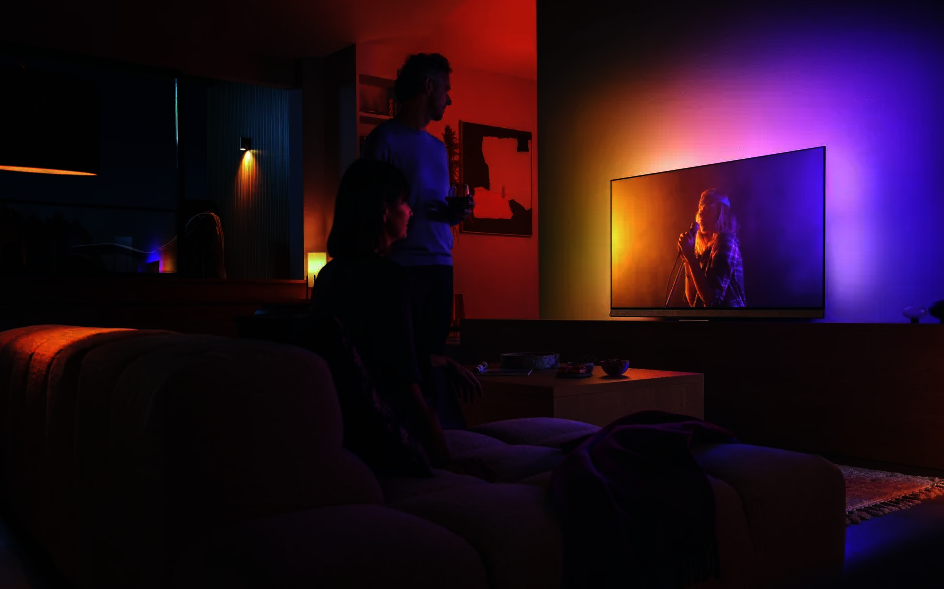The next generation of OLED televisions will be noticeably brighter than earlier models, thanks to some technological breakthroughs in the way the panels are manufactured.

Future OLED TVs could benefit from a couple of key advances, with Universal Display - a supplier of OLED materials - saying that it has finally cracked a 20-year puzzle on how to mass produce blue phosphorescent material. It reckons it is now on track to commercialize phosphorescent blue emitters by the end of 2024, with the technology possibly appearing in TVs the year after.
At the same time, LG Display is reportedly making progress of its own, with recent advances in micro lens array technology that promise to improve both brightness and power consumption.
With regards to Universal Display’s progress, this is a key development. Today’s OLED TVs rely on two kinds of emitting materials, including phosphorescent for red and green light, and fluorescent to create blue light. However, the fluorescent material is known to be very inefficient, and only 25% of the power put into it ends up as light.
So Universal Display has been working towards using a combination of red, green and blue phosphorescent, as doing so would enable it to deliver 100% efficiency for OLED panels. However, it has struggled to refine the blue phosphorescent technology, until now.
According to FlatPanels HD, Universal Display Vice President Mike Hack told the Korean news site ETNews that it can meet its target specifications for phosphorescent blue “by the end of the year”.
If that happens, Universal Display hopes to begin supplying customers including LG Display and Samsung Display with its blue “PHOLED” materials by early 2024. It’s not clear if that would mean some of the newest flagship TVs released that year will be able to incorporate the new tech, but it certainly can’t be ruled out.
Universal Display did not disclose how it has managed to achieve its breakthrough, and there’s no word on the lifespan of blue PHOLED panels. However, we have to assume that the future of OLED TV is definitely looking a lot brighter.
And it may be brighter still if LG Display has anything to do with it. According to a report in The Elec, the company is close to perfecting its micro lens array technology for larger panels.
Micro lens arrays are a thin, transparent layer that contain thousands of tiny lenses that can be added to existing OLED panels. It helps to boost brightness and efficiency by bending the trajectory of light to increase luminance. With traditional OLED, much of the light generated by the pixels bounces around inside the TV, instead of going our towards the viewer. Micro lens arrays effectively make it possible to direct more of the light where it’s supposed to go, and therefore increase the overall brightness of the panel.
According to The Elec, by adding micro lens array tech to OLED, LG Display can also prolong the lifetime of its panels too.
The company initially struggled to apply the technology to OLED as it caused “smudges” that resulted in the display surface looking uneven. However, it has apparently resolved this problem by using a special adhesive, The Elec reported.
Unfortunately, consumers might still have to wait a while before they get to see the results themselves. The Elec said LG Display will not be launching any OLED panels with micro lens array next year as its biggest customers, LG Electronics and Sony, have already finalised their OLED TV lineups for next year.